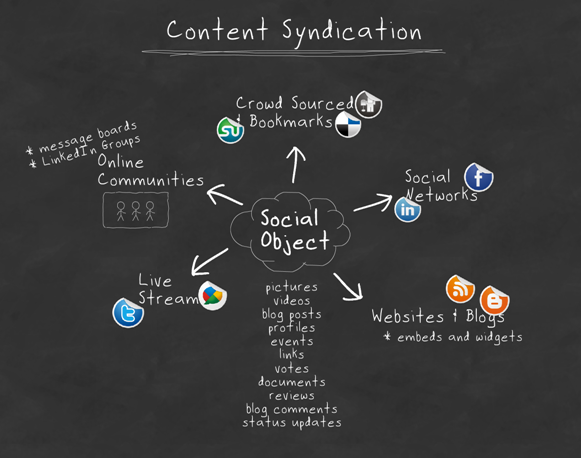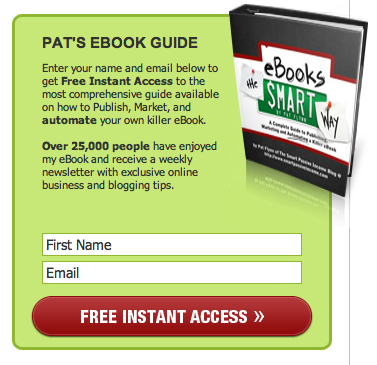Some people call me an OG of wedding business marketing, but deep down I'm just another person wearing PJ bottoms on Zoom. I swear a lot, I share my struggles, and I don't pretend to be better than anyone else.
a marketing and business nerd who fell in love with the wedding industry.
Hi, I’m Heidi
How To Get Your Content In Front Of Your Ideal Client [Day 21: 30 DBWB]
[This post is an excerpt from the 30 Days To A Better Wedding Business Workbook]
Writing content is important, but it doesn’t matter if no one can find it. Getting your great content in front of the write people is key so today I’ve got some tactics that will help with this. These tactics aren’t difficult, but should be a part of your routine after you publish a post. In fact, I suggest making a checklist of your post-publishing to do’s in order to get your content out there.

Photo by Chris Heiler, available under a Creative Commons attribution license
Email and RSS subscriptions
Most people who subscribe to blogs, do so through email subscription. This is excellent for you because your content is landing in their inbox on a regular basis. Those who use the RSS subscription option will likely read your blog from a reader like Feedly or Flipboard. I will focus on email marketing for this lesson though because it is the most useful for generating business.
How email subscriptions work
You’ve probably seen email subscription forms before like this:
(Form from www.smartpassiveincome.com)
These forms are really easy to create, all you need to do is get signed up with an email marketing provider. I would suggest either MailChimp or Aweber. MailChimp has a free starter account but Aweber has more features available. In case you’re curious, I use Aweber but I have used Mailchimp in the past.
Once you get signed up you’ll be able to create a form. People can enter their name and email and receive a link to a free gift that you provide (like the ebook featured above) as well as your blog posts/newsletters. I cannot stress this enough: Do not tell your customers they will receive a newsletter. Never ever use the word “newsletter”. No one wants a newsletter, but lots of people want a “free ebook and free weekly tips” (aka your blog posts).
When people sign up to your list it’s them saying, “Tell me more!” so make sure you stay in contact with them on a regular basis. These are your best leads because they are continuously engaged with your business and are paying attention to what you have to say. The ultimate goal of your website should be to get people onto this list so that you can market to them continuously. When it comes to important purchases, like those relating to a wedding, people need time to consider their options and learn about what is available. Remember your email list are people who are interested in your product/service so treat them well.
A Note About Spam: It is important that people choose to be on your email list. Do not randomly add people that you already have emails for. Your audience needs to opt-in by using your form in order to receive your emails. Adding people who have not opted in is against the terms of use of email marketing providers and is against laws protecting the privacy of contact details. When in doubt, just ask people to fill out your form so that you have explicit permission to contact them. Once people do sign up and give you permission to contact them, don’t hesitate to do so. Helpful content that people have requested is not spam.
Make sure you link to your blog posts on your Facebook page so that your fans can stay updated. I wouldn’t suggest using any tools to do this because Facebook punishes you when you don’t post directly from their platform. [Update: Facebook reported that this has been changed and after doing some testing myself, it appears to be safe to use tools to post to your Facebook page. I highly recommend using Buffer.] You can schedule posts on your Facebook page now so take advantage of this feature. You could also share relevant links to posts in any groups you are in.
You can break down a blog topic and create many different tweets that link to it. If you are offering 5 tips, schedule 5 tweets, each containing one of the tips and a link to the post. It is much more acceptable to share something more than once on Twitter than other social networks, but don’t over-do it. Buffer is my favourite tool for scheduling tweets so that they go out automatically. You can even use it in conjunction with SocialBro to find the best times for you to tweet. You can also review your stats to see how which tweets perform best which will help you to figure out what to write about in the future.
Keeping old posts alive
If you write an evergreen post, (one that will be as relevant to your market in the future as it is right now) make sure you don’t let it die in your archives. Review your Google Analytics to see what your most popular posts were, and share them periodically. If you wrote a great how-to article 9 months ago, it’s likely your new followers will have not seen it. As long as the information is still correct and relevant, continue sharing your old posts!
Automate what you can
Tools like IFTTT and Zapier will automatically take actions on your behalf. I use IFTTT to submit every new post I publish to Buffer, LinkedIn, Delicious and Diigo. These tools have endless possibilities so have a look and see how you can make them work for you.
Where else does your ideal client spend time? This is where you should share your content. What will you put on your post-publishing checklist?
Still Paying for The Knot or WeddingWire (Even Though They Stopped Working)?
Discover the proven roadmap wedding pros use to replace outdated platforms and finally attract inquiries that lead to bookings.
Leave a Reply Cancel reply
Based in San Diego, California / working with wedding businesses worldwide

I have been posting my blogs to Facebook for some time now using a third party app. In what way does Facebook punish you for doing this and why?!
I don’t know why, it may just be a technical problem with the 3rd party API that plugs into Facebook but historically it has been a problem. Facebook says that they fixed it but I would personally rather play it safe. Even when I worked at a social media startup we never used our own tool to post to Facebook for that reason. I prefer to optimise my posts for my Facebook audience instead of just sharing a link so I don’t really mind it.
Here’s some info about the issue: http://edgerankchecker.com/blog/2011/09/does-using-a-third-party-api-decrease-your-engagement-per-post/